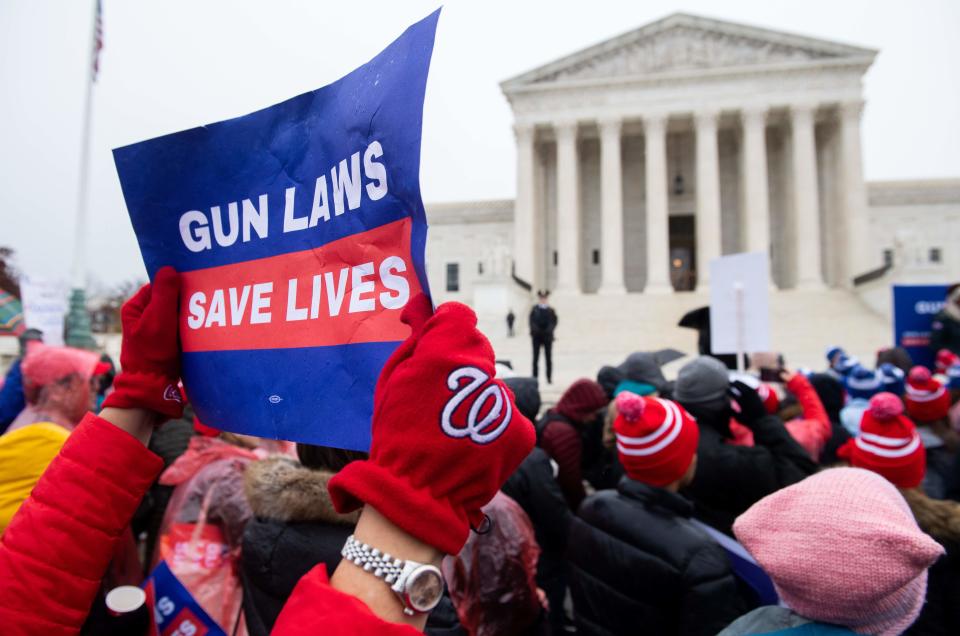Constitutional lesson: What does the Second Amendment say and do? | Opinion
Editor's note: This is a regular feature on issues related to the Constitution and civics written by Paul G. Summers, retired judge and state attorney general.
The U.S. Constitution is the supreme law of America. Amendments are part of the Constitution. The first 10 Amendments, or Bill of Rights, were submitted to the state legislatures in September 1789. The Bill of Rights was ratified in December 1791.
Our Founders created three separate and equal branches of government: legislative, executive and judicial. The first two are political; the judiciary is not. Judges must be independent, follow the rule of law, and act as checks and balances on abuse of power by other branches.
The Supreme Court ultimately decides whether a law or activity of any of the three branches of government comports with the Constitution. The Court has the final say on constitutionality.
The independence of the third branch is the crown jewel of our constitutional republic.
More:Covenant School shooting should unite us in grief and resolve | Editorial
Hear more Tennessee Voices: Get the weekly opinion newsletter for insightful and thought provoking columns.
Here's how the Second Amendment came about
Amendment II. “A well regulated Militia, being necessary to the security of a free State, the right of the people to keep and bear Arms, shall not be infringed.”

The Revolutionary War produced two sets of patriots: the Federalists and the Anti-Federalists. The Federalists wanted a strong, national government; the Constitution was a way to have that national government.
Anti-Federalists felt a national government would not protect people far away from the Capitol; so they proposed 12 amendments to the Constitution, ten of which were ratified as the Bill of Rights. Part of the workable compromise between these two sets of patriots resulted in the ratification of the Bill of Rights.
The Second Amendment was part of that compromise between the Federalists and the Anti-Federalists. These two sets of patriots comprised the body we refer to as the Founding Fathers. They had set views, just like our leaders have set views in the 21st Century. The Fathers knew that the Constitutional process was a compromise. They produced not only a Constitution but also the Bill of Rights.
Sign up for Latino Tennessee Voices newsletter:Read compelling stories for and with the Latino community in Tennessee.
Sign up for Black Tennessee Voices newsletter:Read compelling columns by Black writers from across Tennessee.
What the Supreme Court has said on gun rights
The Second Amendment originally banned the federal government from regulating guns, and states could regulate almost as much as they desired. That federal ban has changed over the years. The Supreme Court has ruled that pursuant to the Second and 14th Amendments, gun possession and ownership are individual rights afforded to citizens.
That is not to say that it is an absolute right, and some limitations have been upheld by the judicial branch. For example, a convicted felon, whether from state or federal court, cannot lawfully possess a weapon.
In many states, a person who is addicted to substances or is not mentally competent cannot possess weapons. Likewise, only dealers and persons specifically designated can possess or transport automatic weapons.
The Second Amendment is an unalienable right, which cannot be taken away; but it has its reasonable limitations designed to protect other people.
The right to bear arms was a compromise between two sets of American patriots. It has been a fundamental, unalienable American right since 1791.
We shall continue in a future article with the Third Amendment. Constitutional study is time well spent.
Paul G. Summers is a lawyer. He is a former appellate and senior judge, district attorney general, and the Attorney General of Tennessee. Judge Summers resides in Holladay and Nashville.
This article originally appeared on Nashville Tennessean: Constitutional lesson: What does the Second Amendment say and do?

